
Alexander Jagiellon of the House of Jagiellon was the grand duke of Lithuania and later also king of Poland. He was the fourth son of Casimir IV Jagiellon. He was elected grand duke of Lithuania on the death of his father (1492) and king of Poland on the death of his brother John I Albert (1501).
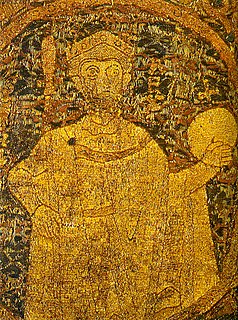
Stephen I, also known as King Saint Stephen, was the last Grand Prince of the Hungarians between 997 and 1000 or 1001, and the first King of Hungary from 1000 or 1001, until his death in 1038. The year of his birth is uncertain, but many details of his life suggest that he was born in, or after, 975, in Esztergom. At his birth, he was given the pagan name Vajk. The date of his baptism is unknown. He was the only son of Grand Prince Géza and his wife, Sarolt, who was descended from a prominent family of gyulas. Although both of his parents were baptized, Stephen was the first member of his family to become a devout Christian. He married Gisela of Bavaria, a scion of the imperial Ottonian dynasty.

Orăștie is a city in Hunedoara County, south-western Transylvania, Romania.
The Árpáds or Arpads were the ruling dynasty of the Principality of Hungary in the 9th and 10th centuries and of the Kingdom of Hungary from 1000 to 1301. The dynasty was named after the Hungarian Grand Prince Árpád who was the head of the Hungarian tribal federation during the conquest of the Carpathian Basin, c. 895. It is also referred to as the Turul dynasty, but rarely.

Esztergom is a city in northern Hungary, 46 kilometres northwest of the capital Budapest. It lies in Komárom-Esztergom county, on the right bank of the river Danube, which forms the border with Slovakia there.

Buda Castle is the historical castle and palace complex of the Hungarian kings in Budapest. It was first completed in 1265, but the massive Baroque palace today occupying most of the site was built between 1749 and 1769. The complex in the past was referred to as either the Royal Palace or the Royal Castle. The castle now houses the Hungarian National Gallery and The Budapest History Museum.

The Church of the Assumption of the Buda Castle, more commonly known as the Matthias Church, more rarely the Coronation Church of Buda, is a Roman Catholic church located in the Holy Trinity Square, Budapest, Hungary, in front of the Fisherman's Bastion at the heart of Buda's Castle District. According to church tradition, it was originally built in Romanesque style in 1015, although few references exist. The current building was constructed in the florid late Gothic style in the second half of the 14th century and was extensively restored in the late 19th century. It was the second largest church of medieval Buda and the seventh largest church of the medieval Hungarian Kingdom.

The Catholic Church in Hungary is part of the worldwide Catholic Church, under the spiritual leadership of the Pope in Rome.
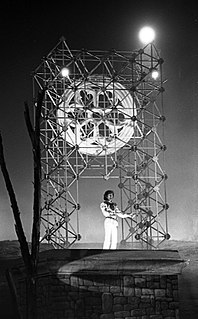
István, a király is a Hungarian rock opera with music by Levente Szörényi, lyrics by János Bródy and book by Bródy and Miklós Boldizsár, based on the latter's play, Ezredforduló.
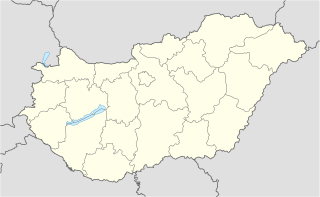
Somogyegres is a village in Tab District, Somogy county, Hungary.
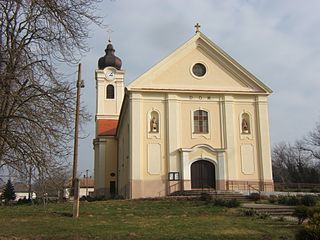
Babócsa is a village in Somogy County, Hungary.

Bálványos is a village in Somogy County, Hungary.

Somogyvár is a village in Somogy County, Hungary.

Koppány, also known as Cupan, was the Duke of Somogy in Hungary in the late 10th century. According to modern scholars' consensus view, he was a member of the royal Árpád dynasty. Koppány was the lord of the southern region of Transdanubia during the reign of Géza, Grand Prince of the Hungarians, who ruled between the early 970s and 997. After the death of Géza, Koppány laid claim to the throne against Géza's devout Christian son, Stephen. His claim was mainly supported by pagan Hungarians, but the royal army routed his army near Veszprém in 997 or 998. Koppány was killed either in the battle or in his duchy, to which he had fled from the battlefield. His corpse was cut in four pieces to be displayed on the walls of four major strongholds of Hungary, Győr, Veszprém, Esztergom and Gyulafehérvár.

The medieval Palace Chapel in Buda Castle was built in the 15th century by King Sigismund as the lower chapel of the former Castle Church. The Gothic chapel, which survived the destruction of the 1686 siege, was buried under a Baroque terrace for centuries. After its reconstruction in 1963 became part of the exhibition of the Budapest History Museum.
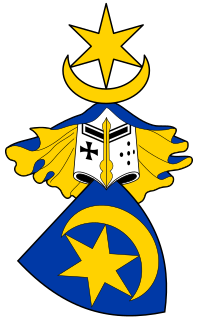
Hont-Pázmány (Hunt-Poznan) was the name of a gens ("clan") in the Kingdom of Hungary. The Gesta Hungarorum mentions that the ancestors of the family, the brothers Hont (Hunt) and Pázmány (Pazman), originally from the Duchy of Swabia in the Holy Roman Empire, arrived in the late 10th century to the court of Grand Prince Géza of the Magyars:
The next arrivals were Hunt and Pazman, two half-brothers, courageous knights of Swabian origin. These two and their retainers had been journeying through Hungary with the intention of passing over the sea when they were detained by Duke Géza, and finally they girded King Stephen with the sword of knighthood at the river Hron, after the German custom.
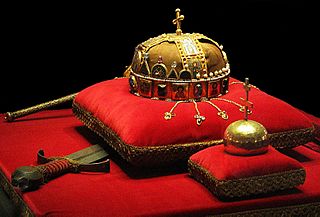
The Coronation of the Hungarian monarch was a ceremony in which the king or queen of the Kingdom of Hungary was formally crowned and invested with regalia. It corresponded to the coronation ceremonies in other European monarchies. While in countries like France and England the king's reign began immediately upon the death of his predecessor, in Hungary the coronation was absolutely indispensable: if it were not properly executed, the Kingdom stayed "orphaned". All monarchs had to be crowned as King of Hungary in order to promulgate laws and exercise his royal prerogatives in the Kingdom of Hungary. Starting from the Golden Bull of 1222, all new Hungarian monarchs had to take a coronation oath, by which they had to agree to uphold the constitutional arrangements of the country, and to preserve the liberties of their subjects and the territorial integrity of the realm.

Gyula III, also Iula or Gyula the Younger, Geula or Gyla, was an early medieval ruler who ruled in Transylvania. Around 1003, he and his family were attacked, dispossessed and captured by King Stephen I of Hungary (1000/1001-1038). The name "Gyula" also means a title. "Gyula" meant the second highest title in Hungarian tribal confederation.
Fancica or Francica was a Hungarian prelate at the turn of the 11th and 12th centuries, who served as Bishop of Zagreb from around 1125 to 1131, then Archbishop of Kalocsa from 1131 until his death.
Zerind the Bald was a Hungarian lord in the 10th century. According to modern scholars' consensus, he was a member of the royal Árpád dynasty. He was the father of Koppány, the late 10th-century rebellious Duke of Somogy.



















